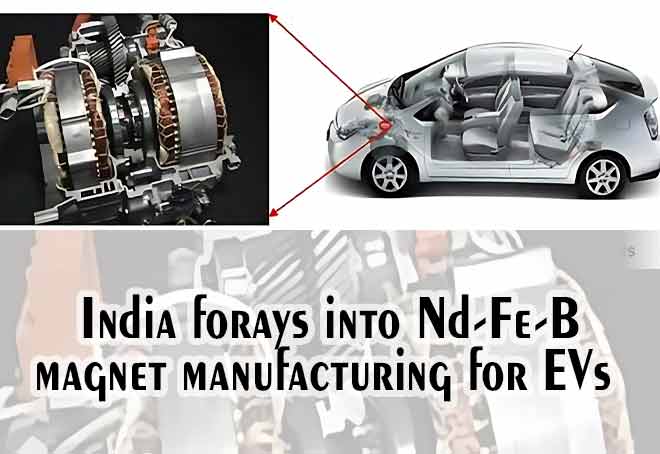India forays into Nd-Fe-B magnet manufacturing for EVs
Updated: Dec 21, 2022 10:11:34am

India forays into Nd-Fe-B magnet manufacturing for EVs
New Delhi, Dec 21 (KNN) In line with Atmanirbhar Bharat mission, the Advanced Research Centre for Powder Metallurgy and New Materials (ARCI) has ventured into setting up of pilot plant for manufacturing of near net shaped Nd-Fe-B magnets used in Electric Vehicles (EVs).
They will set up the trial plant through a major project funded by the Science and Engineering Research Board (SERB), said the Ministry of Science & Technology on Tuesday.
The new strategy could also be used for commercial production of Nd-Fe-B magnets in India, reducing imports that meet the major requirements of the automotive sector.
It will be explored for the magnets manufactured in the pilot plant, said the official statement.
More than 90% of EVs use brushless DC (BLDC) motors made up of rare earth Neodymium Iron Boron (Nd-Fe-B) magnets.
Since its discovery by Sagawa in 1984, the Nd-Fe-B magnet has been one of the most sought-after permanent magnetic materials for many applications due to its exceptional combination of magnetic properties.
Nd-Fe-B magnets used in EVs operate at high temperatures of 150 – 200oC and need to exhibit high resistance to demagnetization, a capability that pure Nd-Fe-B magnets do not have.
Hence Dysprosium (Dy) metal is added as an alloy to improve the resistance to demagnetization. World over, researchers are trying to enhance coercivity (resistance to demagnetisation) of Nd-Fe-B magnets without the addition of costly Dy.
A strategy adopted by the research community to enhance coercivity is to enrich the region between the grains of the Nd-Fe-B magnet with “non-magnetic” elements through suitable heat treatments (grain boundary diffusion).
Recently, scientists from the Centre for Automotive Energy Materials at ARCI, an autonomous Research and Development Centre of the Department of Science and Technology (DST) have enhanced the coercivity of Niobium (Nb)-containing Nd-Fe-B melt-spun ribbon by grain boundary diffusion process (GBDP) using a low melting point alloy of Nd70Cu30 which acts as the source for the “non-magnetic” element.
They have reported restricted grain growth during grain boundary diffusion due to the precipitation of Nb, which facilitates the enrichment of Copper (Cu) at the grain boundaries aiding the increased resistance to demagnetization of Nd-Fe-B powders.
For more details, contact Dr. D. Prabhu at dprabhu@arci.res.in and publication link is https://doi.org/10.1080/21663831.2022.2104139. (KNN Bureau)













